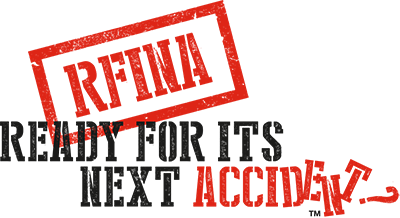The Importance of Information and Who is Using it
This article by John Heuter, the Editorial Content Director at Repairer Driven News has some useful statistical information and includes an easy to follow video on the importance of correct repair procedures. However I am reposting this article less for these features than as supporting information to articles I have written and posted previously. This article supports and affirms the importance of Next Accident Readiness and also affirms that this is a concept that still needs time to become a part of industry procedure and culture.
You will see that John uses a medical example to demonstrate the need for information as I did in the How and What post of August 18.
The quote in the article from Mike Anderson of Collision Advice is consistent with the themes I have used in other posts, with Complexity in Every Car from September 21 being a good example.
Mike looks to improved information access as a solution and I do not disagree with him at all in this opinion, but for most problems there is more than one possible solution. Another solution, one that is more time consuming and costly to the individual repair facility, is the development of a new role in the management and support structure.
The list of industry participants in Next Accident Ready Leadership post of September 7th includes roles that are currently in place in most collision repair shops. In looking at the list in the Leadership post, there is no role of Damage Report Writer or Tech Researcher.
The natural first thought when requirements start to change is to redefine roles and add responsibilities while looking to improvement in efficiencies and technology to free up the time needed. This is what Mike is suggesting with his discussion of added features to estimating programs that will allow today’s estimators to become tomorrow’s Damage Report Writers.
I will go out on a limb and suggest that today’s estimators have enough to do now with their duties including customer contact, parts ordering, insurance liaison and collaborative scheduling of work. To give them access to a huge amount of new information and expect them to work properly with it is unrealistic. To expect them to put their faith in an automated program without having the training to interpret or fact check (to use a current popular theme) is not good business.
The role of Damage Report Writer or Tech Researcher is currently needed; after some years of experience and further automation it may be that this function can be combined with the estimator/customer service rep but initially the specific skills and learning required mean that a separate role is needed.
In the How and What post a medical example was used. For this one let’s use a news reporting example of the relationship between the TV News Anchor (Estimator) and the research staff/ fact checkers (Tech Researcher/Damage Report Writer) working in the background.
The story has to be told that evening, just a few hours away and while the anchor can put together and deliver a very good story she could not do it on her own in the time allowed. The background staff can work with the raw reporting from the field and go to their many sources for the verification and additional information that will allow the story to be told accurately. As in the medical example the related but different equally important skill sets come together to achieve the needed result, neither could do it well alone.
